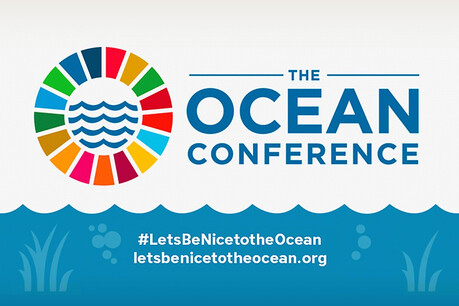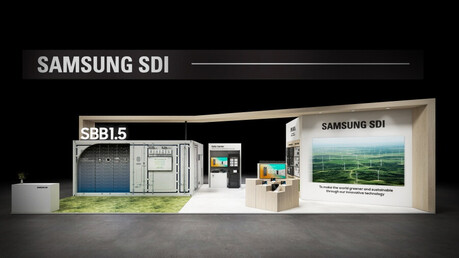
BUENOS AIRES, Argentina – Despite the volatility in the lithium industry, an analysis suggests that Lithium Argentina AG (LAR), a major lithium producer in Argentina, is significantly undervalued and holds a strong outlook for future production increases. The stock market currently values the company at a price-to-book (P/B) ratio of merely 0.36x, indicating an extreme undervaluation. While a partial sell-off due to fluctuating lithium prices might be justified, the current level of undervaluation is considered excessive.
Overwhelming Potential for Production Growth
Lithium Argentina AG's greatest strength lies in its potential for production capacity expansion. The company currently has an annual lithium production of around 40,000 tonnes, with the potential to increase this to 200,000 tonnes in the future. Specifically, production in 2025 is expected to grow by 18% to 37% year-on-year, demonstrating concrete short-term expansion plans.
This increase in production is primarily slated to occur through two major projects. The actively operating Cauchari-Olaroz project reached 85% of its full production capacity in Q1 2025, producing 7,200 tonnes. Total production for 2025 is estimated to be between 30,000 and 35,000 tonnes. Furthermore, a Phase 2 expansion of Cauchari-Olaroz is planned to secure an additional 40,000 tonnes of production capacity.
Moreover, Lithium Argentina has signed a Letter of Intent (LOI) with Chinese lithium company Ganfeng Lithium to jointly develop the Pozuelos-Pastos Grandes project. If realized, this project could add an annual production capacity of 150,000 tonnes, bringing the total production close to 200,000 tonnes.
Relocation of Headquarters to Switzerland and Financial Status
In January, Lithium Argentina relocated its headquarters from Canada to Switzerland, signaling its intent to enhance its international standing and improve financial accessibility. This move is analyzed as a step towards securing a more neutral geopolitical position and exploring better financing options.
However, the financial health of Lithium Argentina AG presents a somewhat complex picture. Since the company primarily operates through its subsidiary, Exar SA, its income statement does not directly display sales revenue, instead showing various expense items. The company has faced challenges over the past two years due to the sharp decline in lithium prices, and these financial difficulties have contributed to the stock's undervaluation.
Despite this, as of Q1 2025, the cash cost of sales per tonne was $6,634, a 7% reduction compared to the full-year 2024 figure of $7,131, indicating progress in cost cutting. This, along with increased production, is expected to positively impact profitability. Analysts also project an improvement in Lithium Argentina's profitability, driven by three key factors: a rebound in lithium prices, increased production, and cost reductions. Earnings Per Share (EPS) is also predicted to rise, with consensus EPS at $0.17 for 2026 and $0.40 for 2027. This indicates a significantly low price-to-earnings (P/E) ratio relative to the current stock price, suggesting high investment appeal.
Future Outlook for the Lithium Market: Deepening Supply-Demand Imbalance
Lithium prices surged in 2021 and 2022 due to a sharp increase in electric vehicle (EV) demand but plummeted in 2023 due to rising production, slowing EV demand, and the potential collapse of the 'lithium bubble.' However, from a long-term perspective, the lithium market is largely expected to face a supply shortage again.
According to a McKinsey report, battery-related lithium consumption is projected to increase from 60% in 2023 to 95% in 2030. Roots Analysis predicts a Compound Annual Growth Rate (CAGR) of 19.23% for lithium demand until 2035. Furthermore, Acuity Knowledge Partners forecasts a lithium deficit of 97 kilotonnes (Kt) by 2030 and 621 Kt by 2040, despite a short-term oversupply.
Lithium futures contract prices on the Chicago Mercantile Exchange (CME) also support this long-term price increase forecast. Current futures prices indicate price increases over the next few months, with the December 2026 contract price trading 18% higher than the spot price. This strongly suggests a high probability of lithium prices rebounding in the future.
The International Energy Agency (IEA) expects EV market share to exceed 40% by 2030, with some forecasting 50-60%. Given that 60% of total lithium production in 2022 was used in EV batteries, and this proportion is expected to reach 95% by 2030, the growth of the EV market will critically influence lithium demand. Goldman Sachs also projects a gradual increase in lithium prices to $11,000 per tonne by the end of 2025 and $17,327 by 2028, foreseeing the exit of high-cost producers from the market.
Fastmarkets analysts project a supply surplus of 175,000 tonnes in 2023 and 154,000 tonnes in 2024 for the lithium market. However, they expect the surplus to significantly decrease to 10,000 tonnes in 2025, followed by a supply deficit of 1,500 tonnes in 2026. The European Commission's Raw Materials Information System (RMIS) also predicts a severe imbalance between lithium demand and supply within 2-3 years.
Considering these analyses, while short-term fluctuations in lithium prices are inevitable, a price rebound is highly probable in the mid-to-long term due to robust demand growth and limited supply.
Lithium Alternatives and Risk Factors
Lithium is currently an indispensable core material for the energy transition era, used in EV batteries, energy storage systems (ESS), and portable electronic devices. Lithium batteries offer numerous advantages, including efficiency, high energy density, long lifespan, fast charging speed, and the absence of harmful heavy metals.
However, they also have disadvantages, such as the risk of thermal runaway, emission of toxic gases, and difficulty in extinguishing fires. Additionally, their performance tends to degrade over time due to charge-discharge cycles. Due to these drawbacks, various alternative battery technologies are being developed, including sodium-ion batteries (Na-ion), solid-state batteries (SSB), and redox flow batteries (RFBs).
Sodium-ion batteries operate similarly to lithium-ion batteries and offer significant cost advantages due to abundant sodium, as well as being less flammable than lithium. However, they have a lower energy density. Companies like CATL and BYD are experimenting with this technology. Solid-state batteries replace flammable liquid electrolytes with a solid, significantly reducing the risk of leakage and combustion. They offer high energy density and long lifespan but are still in early stages of development, facing high production costs and technical challenges in vehicle integration. Redox flow batteries are better suited for large-scale energy storage, offering advantages in scalability, safety, and long lifespan, but they have lower energy density and high initial costs.
Beyond these, various other alternative technologies are being researched, including metal-air batteries (zinc-air, aluminum-air), lithium-sulfur (Li-S), and magnesium-ion (Mg-ion). Each technology has its pros and cons across variables such as cost, energy density, safety, lifespan, and environmental impact.
Nevertheless, the McKinsey report predicts that 95% of lithium production will be used in battery-related applications by 2030, indicating that lithium-based battery technology will continue to play a crucial role in the future.
In terms of investment risks, the most significant factor is lithium price volatility. While the long-term outlook is positive, a short-term price decline due to the current oversupply cannot be ruled out. Additionally, the company's cash burning issues (primarily due to investments), liquidity risk, and the possibility of failing to improve profitability are significant risk factors. Currently, Lithium Argentina has a favorable debt-to-equity ratio of 0.24x, but with current liabilities of $240.1 million against current assets of $133.1 million, its current ratio is a low 0.55x. While this implies short-term liquidity risk, it is not a major concern given the management's financial capabilities.
Environmental and ESG (Environmental, Social, and Governance) risks, as well as geopolitical risks, also exist. However, the decision to relocate the headquarters to Switzerland is expected to positively mitigate these risks. Notably, the political situation in Argentina is optimistic. Despite President Javier Milei's libertarian and 'anarcho-capitalist' views, his re-election in 2027 seems likely. Positive changes such as reduced inflation, a decrease in violent crime rates, tax cuts, and deregulation are creating a favorable environment for business activities, further enhancing investment appeal.
High Risk, High Potential Investment Opportunity
In conclusion, Lithium Argentina AG is currently trading at an extremely undervalued price-to-book ratio of 0.36x. While not currently profitable, increased sales from expanded production capacity are expected to significantly improve profitability. Furthermore, there is a very high probability of lithium prices rebounding within 1 to 3 years.
Although 'minor' risks such as lithium price volatility and short-term liquidity exist, there are no severe warning signs. This stock, with a beta of 1.84, falls into the category of 'high-beta stocks,' meaning it can yield high returns or significant losses in a short period. However, considering the overall situation, a certain level of investment could be a very reasonable choice.
[Copyright (c) Global Economic Times. All Rights Reserved.]




























